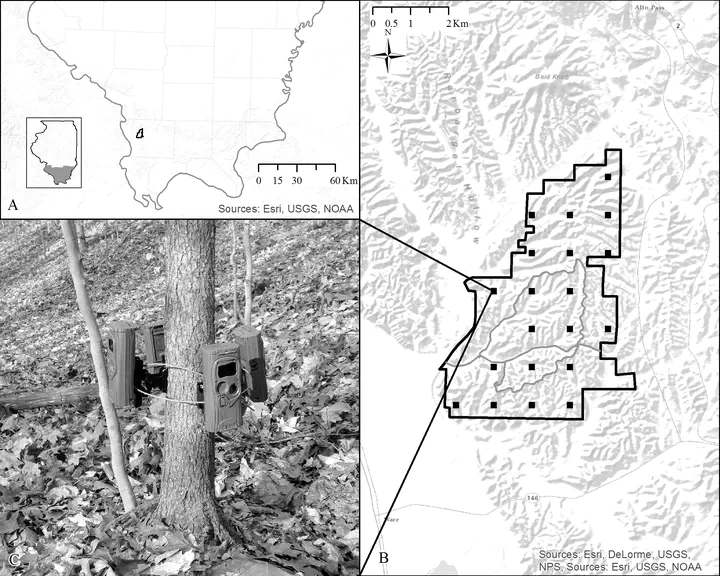Single-Camera Trap Survey Designs Miss Detections: Impacts on Estimates of Occupancy and Community Metrics
 Image credit: Brent Pease
Image credit: Brent PeaseAbstract
The use of camera traps as a tool for studying wildlife populations is commonplace. However, few have considered how the number of detections of wildlife differ depending upon the number of camera traps placed at cameras-sites, and how this impacts estimates of occupancy and community composition. During December 2015–February 2016, we deployed four camera traps per camera-site, separated into treatment groups of one, two, and four camera traps, in southern Illinois to compare whether estimates of wildlife community metrics and occupancy probabilities differed among survey methods. The overall number of species detected per camera-site was greatest with the four-camera survey method (P<0.0184). The four-camera survey method detected 1.25 additional species per camera-site than the one-camera survey method, and was the only survey method to completely detect the ground-dwelling silvicolous community. The four-camera survey method recorded individual species at 3.57 additional camera-sites (P = 0.003) and nearly doubled the number of camera-sites where white-tailed deer (Odocoileus virginianus) were detected compared to one- and two-camera survey methods. We also compared occupancy rates estimated by survey methods; as the number of cameras deployed per camera-site increased, occupancy estimates were closer to naïve estimates, detection probabilities increased, and standard errors of detection probabilities decreased. Additionally, each survey method resulted in differing top-ranked, species-specific occupancy models when habitat covariates were included. Underestimates of occurrence and misrepresented community metrics can have significant impacts on species of conservation concern, particularly in areas where habitat manipulation is likely. Having multiple camera traps per site revealed significant shortcomings with the common one-camera trap survey method. While we realize survey design is often constrained logistically, we suggest increasing effort to at least two camera traps facing opposite directions per camera-site in habitat association studies, and to utilize camera-trap arrays when restricted by equipment availability.